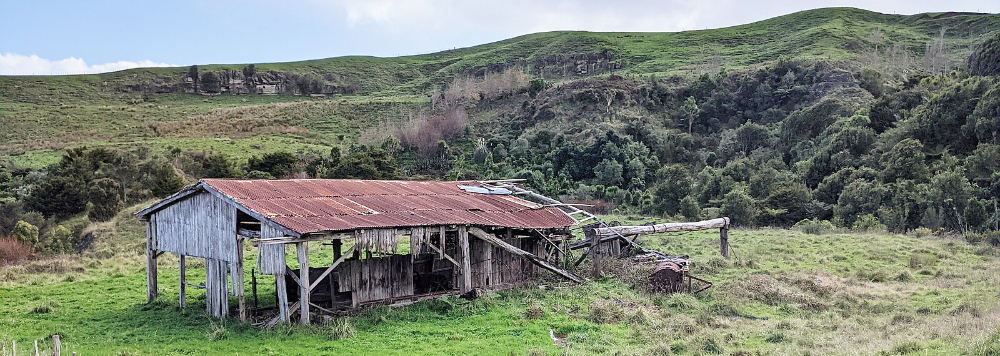Changes to permitted development rights for agricultural buildings in 2024
Contents |
[edit] Town and Country Planning Amendment Order 2024
As of May 21, 2024, the Town and Country Planning Amendment Order (General Permitted Development, etc) 2024 comes into effect. This was developed following a consultation undertaken by the Department for Levelling Up, Housing and Communities (DLUHC) in 2023. Prior to this in 2018, the allowable number of homes converted from agricultural buildings into family homes was increased from 3 to 5, and along with other changes, this now increases to 10.
The main changes are outlined here.
[edit] Allowable floorspace increases
The amount of floorspace that can change from agricultural use to ‘flexible commercial use’ will increase from 500 square metres to 1,000 square metres. The amount of floorspace that can change from a building on an agricultural unit and a former agricultural building to a home will increase from 865 square metres to 1,000 square metres.
[edit] Range of commercial building uses widens
The range of uses agricultural buildings and land within their curtilage that can be used for commercial purposes will widen. This will fall under ‘flexible commercial use’ to include:
- the processing of raw goods produced on the site and which are to be sold on the site (excluding livestock)
- the provision of agricultural training
- outdoor sports, recreation and fitness uses within the curtilage of an agricultural building.
[edit] New build and extension areas and volume increases
The ground area limit of new buildings or extensions erected on farms over 5 hectares will be increased in size from 1,000 square metres to 1,500 square metres. For farms under 5 hectares in size the ground area limit for extensions to existing agricultural buildings will increase from 1,000 square metres to 1,250 square metres.
The cubic content limit of an agricultural building will also increase with an extension from 20% to 25% above the original building cubic content.
[edit] Number of allowable homes increases
To encourage conversion of agricultural buildings to homes suited to rural needs, a single maximum floorspace per house is limited to 150 square metres. The number of allowable homes will now be increased to 10, allowing up to 1,000 square metres of floorspace to change use overall. The housing delivered must meet national space standards, and receive prior approval from the local planning authority that they have adequate natural light.
This permitted development right excludes protected landscapes (which includes National Parks and National Landscapes). However the other rights can be used in protected landscapes.
[edit] Restrictions for scheduled monuments
Where there is a designated scheduled monument, extensions and the erection of new buildings is removed. This is to ensure that nationally important monuments are preserved for the benefit of current and future generations.
For further background information see article permitted development rights for the change of use of agricultural buildings. For further detail visit UK Gov blog Changes to permitted development rights.
[edit] Related articles on Designing Buildings
- Agricultural tenancy.
- Article 4 direction.
- Change of use class.
- Class Q permitted development.
- Class R prior approval scheme.
- Use class designation for land and buildings
- Local development order.
- National planning policy framework.
- Permitted development.
- Planning enforcement.
- Planning permission.
- Prior approval.
- Town and Country Planning (General Permitted Development) (Amendment) (England) Order.
- Use class.
- Use class designation for land and buildings.
Featured articles and news
RTPI leader to become new CIOB Chief Executive Officer
Dr Victoria Hills MRTPI, FICE to take over after Caroline Gumble’s departure.
Social and affordable housing, a long term plan for delivery
The “Delivering a Decade of Renewal for Social and Affordable Housing” strategy sets out future path.
A change to adoptive architecture
Effects of global weather warming on architectural detailing, material choice and human interaction.
The proposed publicly owned and backed subsidiary of Homes England, to facilitate new homes.
How big is the problem and what can we do to mitigate the effects?
Overheating guidance and tools for building designers
A number of cool guides to help with the heat.
The UK's Modern Industrial Strategy: A 10 year plan
Previous consultation criticism, current key elements and general support with some persisting reservations.
Building Safety Regulator reforms
New roles, new staff and a new fast track service pave the way for a single construction regulator.
Architectural Technologist CPDs and Communications
CIAT CPD… and how you can do it!
Cooling centres and cool spaces
Managing extreme heat in cities by directing the public to places for heat stress relief and water sources.
Winter gardens: A brief history and warm variations
Extending the season with glass in different forms and terms.
Restoring Great Yarmouth's Winter Gardens
Transforming one of the least sustainable constructions imaginable.
Construction Skills Mission Board launch sector drive
Newly formed government and industry collaboration set strategy for recruiting an additional 100,000 construction workers a year.
New Architects Code comes into effect in September 2025
ARB Architects Code of Conduct and Practice available with ongoing consultation regarding guidance.
Welsh Skills Body (Medr) launches ambitious plan
The new skills body brings together funding and regulation of tertiary education and research for the devolved nation.
Paul Gandy FCIOB announced as next CIOB President
Former Tilbury Douglas CEO takes helm.
UK Infrastructure: A 10 Year Strategy. In brief with reactions
With the National Infrastructure and Service Transformation Authority (NISTA).























